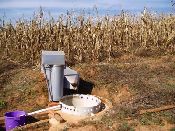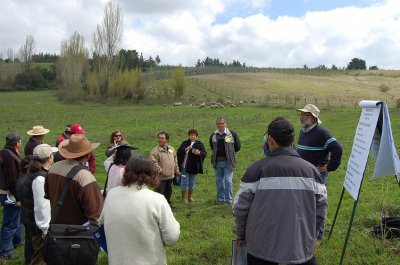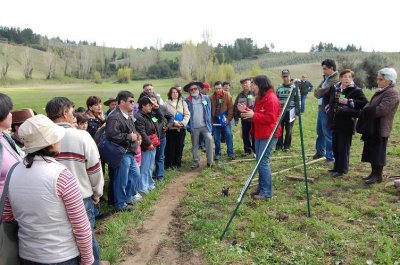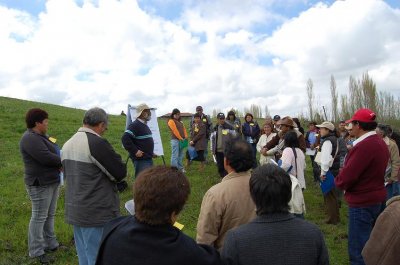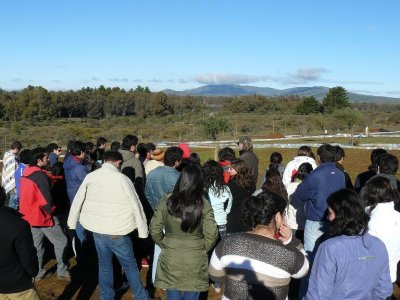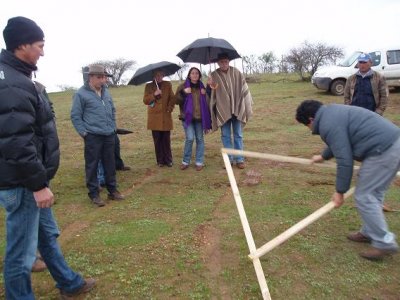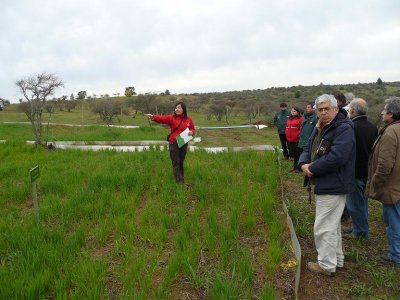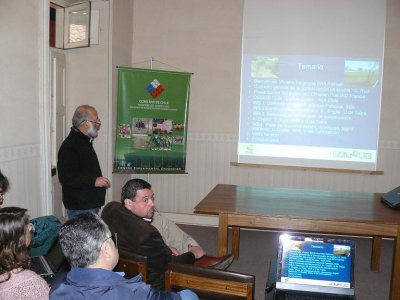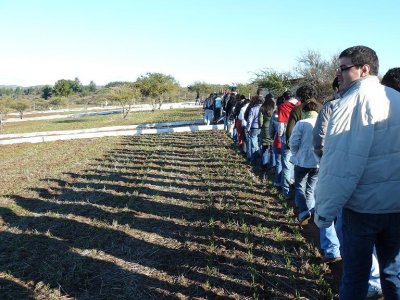|
Agroforestry system with conservation technques; mitigation of water erosion
Authors: Instituto de Investigaciones Agropecuarias (INIA)
| Establishment of an agroforestry system with conservation techniques under dryland conditions |
|
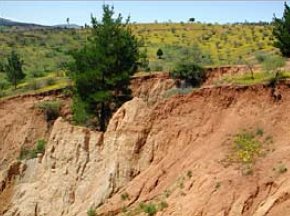
Soil compaction may reduce water infiltration and soil moisture content, limiting tree growth
|
Our objectives are to develop and propose new strategies for agroforestry systems in the Mediterranean region of central Chile.
- The study area is located in the “secano interior” central-south Chile (35° 97S, 72° 24W) in the Mediterranean region of central Chile.
- Mean annual precipitation of 695mm with five months of drought.
- Soil is a Mollic Palexerals.
- Field experiments started in autumn 2007.
- The size of each plot is 30*50m, with around 30% slope.
- Each treatment consisted in multiple purpose trees: Chamaecytisus proliferus, Quillaja saponaria and Quercus suber.
|
Conservation techniques
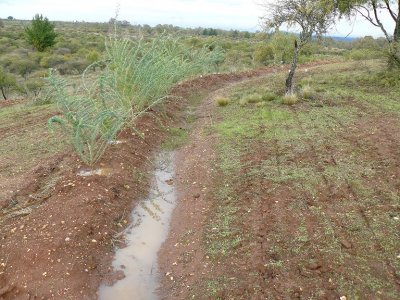 |
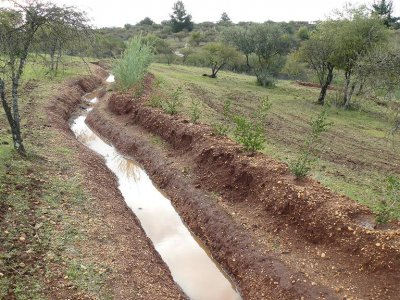 |
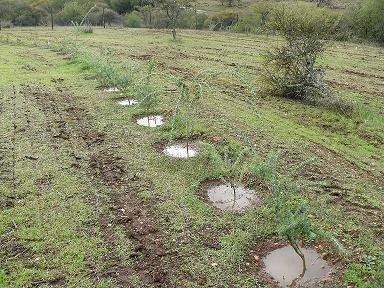 |
| Subsoiling with banks (Sb+B) |
Infiltration trenches (IT) |
Control (TS) |
Evaluations
Soil evaluation
|
Tree evaluation |
Monitoring |
- Physical: texture, aggregate stability, soil water infiltration, bulk density, soil compaction.
- Chemical: pH, Ctotal, Ntotal, macronutrients.
|
- After the first year of establishment, every year growth dry matter of leaves, plant height, crown and trunk diameter are evaluated.
|
- Evaporation tray, rainfall, water soil infiltration (20, 40, 60, 80, 100 cm depths.)
|
Tree growth and soil moisture content
|

|
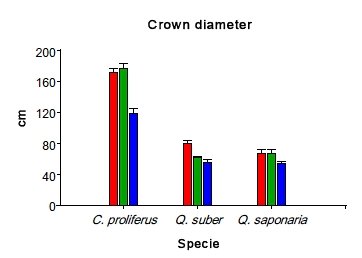
|

|
|
Trunk diameter, crown diameter and plant height for the three tree species in 2009.
Sb+b: sub-soiling with banks; IT: infiltration trench; TS: control treatment
|
The Tagasaste tree (Chamaecytisys proliferus) has grown faster than cork oak (Q. suber) and Q. saponaria. Higher tree growth have been observed with infiltration trenches and with subsoiling.
|
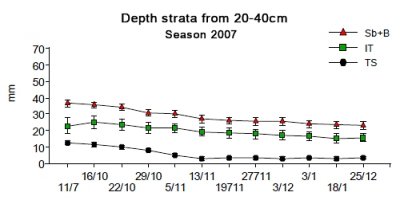
|
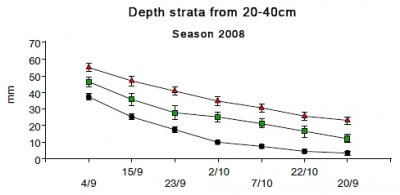
|
| Soil water content evolution at 20-40 cm depth measured after rainfall period during season 2007 and 2008. Sb+B: Subsoiling with banks, IT: Infiltration trenches, TS: Control. |
Soil moisture was significantly (P<0.001) higher with subsoiling and bank, indicating that water infiltration has been increased with the soil treatment.
Early conclusions
Tagasaste (Chamaecytisys proliferus) is the species with most potential in Mediterranean arid zone. The conservation technique of subsoiling with banks increase water infiltration and soil moisture content in depth during dryland period.
| Project results and dissemination to stakeholders |
- Activities realized with farmers adopting conservation techniques in October 2009. No till wheat production, Contour ploughing (CP) with barrier hedges of phalaris and CP with agroforestry Tagasaste in a degraded zone located in Comuna Yumbel with slope 20-30%.
|
Mitigation of water erosion and its effects on soil indicators in the Mediterranean zone of central Chile
|
|
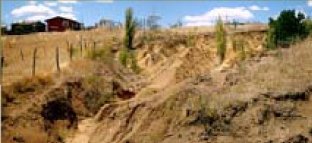
Soil compaction, intensive rainfall during winter and the use of conventional tillage in hilly soils has produced severe water erosion and soil degradation in Chile.
|
Our objectives are to develop and propose new strategies for soil conservation. We are evaluating soil and cultivation techniques and developing land degradation indicators (biological, physical and chemical) that can be used for the evaluation of local conservation programs for degraded zones.
- The study area is located in the “secano interior” (35° 97S, 72° 24W) in the Mediterranean region of central Chile.
- This region has a mean annual precipitation of 695mm with five months of drought.
- Soil is a Mollic Palexerals.
- Field experiments started in autumn 2007.
- The size of each plot is 20*50m in a soil with approximately a 20% slope.
|
The tillage systems selected for an oat-wheat crop rotation are:
- No tillage
- No tillage and subsoiling in the first season (2007)
- No tillage and barrier hedges of phalaris
- Conventional tillage
- No tillage and contour ploughing
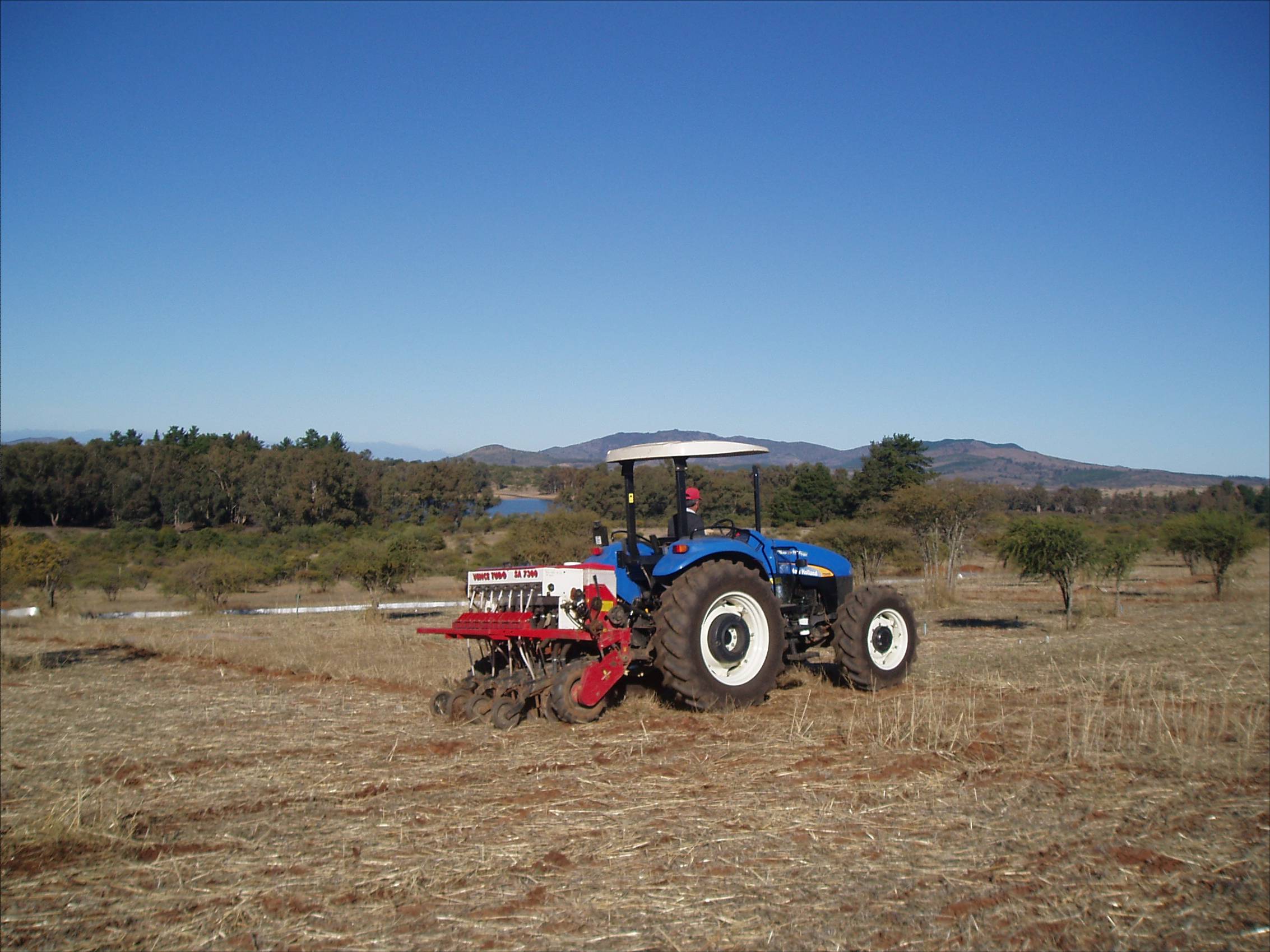 |
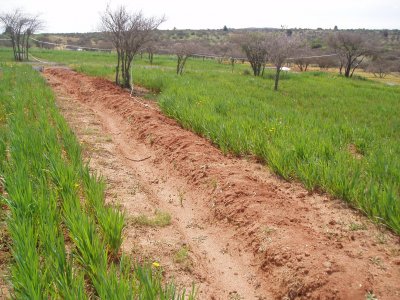 |
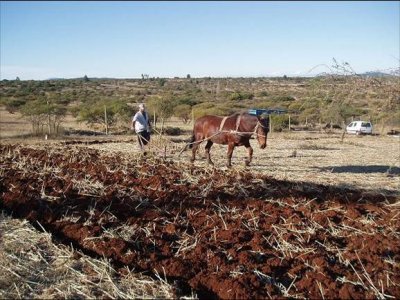 |
No tillage machine
|
No tillage and contour ploughing
|
Conventional tillage with animals
|
Evaluations
Soil evaluation
|
Plant evaluation |
Monitoring |
- Biological: biomass, respiration and enzymes
- Physical: texture, aggregate stability, soil water infiltration, bulk density, soil compaction, hydraulic conductivity.
- Chemical: pH, CTotal, Ntotal, macronutrients.
|
- Biomass, leaf area index, intercepted radiation, stomatal conductance.
- Water use efficiency with C13 in grain.
|
- Evaporation tray, rainfall, water soil infiltration (20, 40, 60, 80, 100 cm depths.)
- For each event, runoff and sediments are collected in tanks for each tillage system.
|
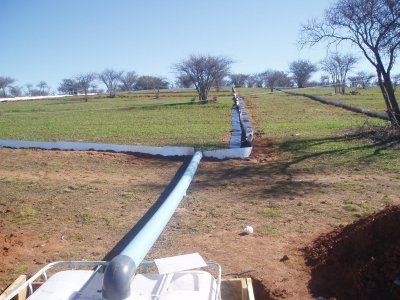 |
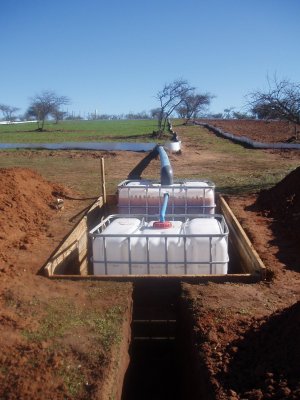 |
Runoff and sediment collection tanks |
Preliminary results of effects of tillage systems on yield, runoff, sediments and soil physical properties
Soil penetration resistance increased with depth; at 10-20cm a compaction layer was detected. The subsoiling treatment (Nt+Sb) was effective in reducing soil compaction in depth. The benefit of the subsoiling was detected also in the average of oat-wheat yield of season 2007 and 2008, respectively.
|
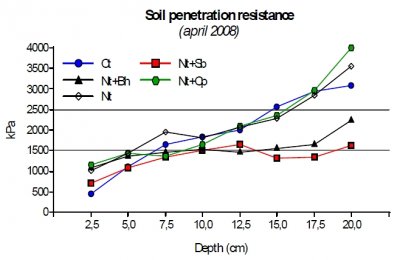
|
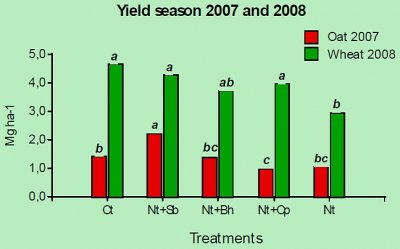
|
| Effect of tillage on soil compaction. Ct: conventional tillage, Nt:no tillage, Sb: subsoiling, Bh:barrier hedges, Cp:contour ploughing. |
Ct: conventional tillage, Nt:no tillage, Sb: subsoiling, Bh:barrier hedges, Cp:contour ploughing |
Runoff and sediments collected in tanks during the second growing season (2008) were much greater in conventional tillage than in conservation systems. The deep variation of moisture in the root zone was greatly influenced by the increasing crop water extraction at later growth stages. No tillage with contour ploughing and No tillage system significantly increased water retention than the other tillage systems.
|
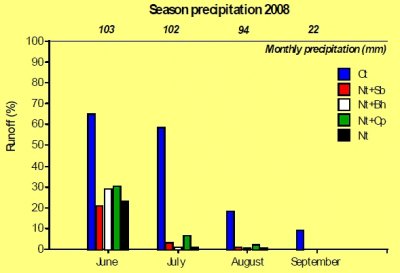
|
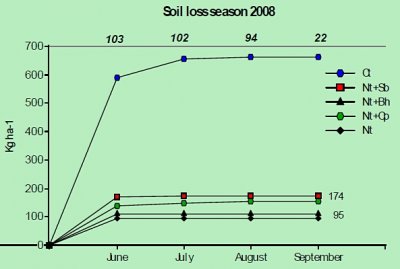
|
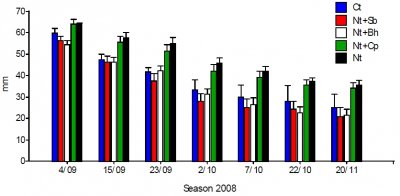
|
|
Runoff (left) and soil loss (right) obtained in 2008.
Ct: conventional tillage, Nt:no tillage, Sb: subsoiling, Bh:barrier hedges, Cp:contour ploughing
|
Temporal variation of soil moisture content after rainfall of season 2008, soil moisture content is evaluated in the tillage system from 20-40cm depth. |
Early conclusions
The results indicate that part of the consequences of adopting conservation tillage practices are the reduction of runoff and soil losses and the increase in soil infiltrations and moisture in depth. No tillage and subsoiling (Nt+Sb) reduced significantly soil penetration resistance which is limiting crop growth and yield.
| Project results and dissemination to stakeholders |
- Every year (from 2007 to 2009) we have received an average of 120 visitors to our experimental site including Chilean government, authorities, farmers, national and international students of several universities.
|
|

